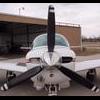Shock cooling on descent
-
Members Online
- mitchsm
- MIRICYL Baby
- kortopates
- pirate
- buddy
- Cfidave
- redbaron1982
- midlifeflyer
- eman1200
- AndrewPatry
- Ragsf15e
- Ventus4
- Hradec
- hazek
- Trogdor
- MDMooney
- Hank
- Vance Harral
- KLudwick
- bluehighwayflyer
- Kelingreen
- N177MC
- MarquezJC
- Fritz1
- Shadrach
- Marc_B
- RampMan
- ElkoRandy20J
- Jarerh
- NicholasM20
- cbarry
- PeteMc
- VWGuy
- spaceman39a
- Jeff Uphoff
- bencpeters
- Flyler


Recommended Posts